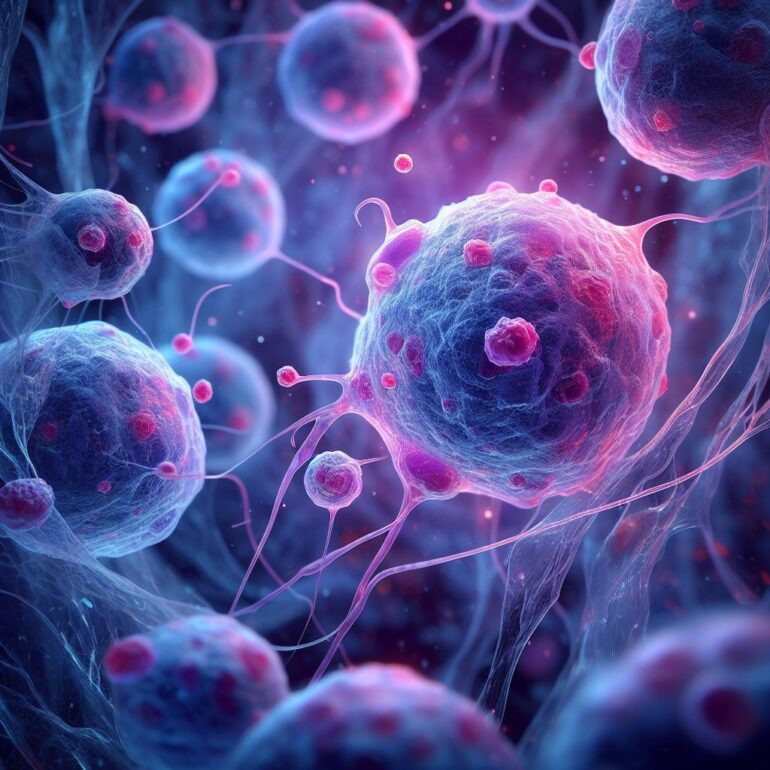TL;DR:
- Researchers at UT Arlington have developed a machine learning-based statistical model for predicting cancer survival rates.
- The model is 30% more accurate than previous methods.
- Leukemia served as the focal point for refining the model.
- The new approach captures complex relationships between cure probability and key factors like patient age.
- Machine learning techniques are becoming crucial in predicting survival rates for various diseases, including COVID-19.
- The model helps strike a balance between effective treatment and minimizing side effects.
- A grant from the National Institute of General Medical Sciences supported this research.
Main AI News:
In a groundbreaking discovery, a professor and his doctoral student at UT Arlington introduced an innovative statistical modeling technique, harnessing the potential of machine learning technology to revolutionize the prediction of cancer survival rates. Their pioneering model boasts an astounding 30% improvement in accuracy compared to its predecessors, ushering in a new era of prognostic precision that distinguishes between those destined for cancer remission and those requiring further medical intervention.
The researchers chose leukemia as the focal point for their model’s refinement, as it is characterized by the abnormal proliferation of cancerous white blood cells. This particular malignancy provided a clear demarcation within historical patient data—those who triumphed over the disease and those who did not.
Principal investigator Dr. Suvra Pal, an associate professor of statistics in UTA’s Department of Mathematics, shed light on the limitations of previous research in this domain. He explained, “Prior efforts to model cure probabilities relied on generalized linear models with well-defined parametric link functions, such as the logistic link function. However, this conventional approach falls short in capturing the intricate non-linear relationships between cure probability and key covariates, such as patient age or the age of a bone marrow donor.”
Unlocking the Potential to Avoid Unnecessary Treatments
The rapid evolution of computing power has ushered in an era where machine learning techniques have become indispensable tools in medical prognosis. These techniques have demonstrated their prowess in predicting survival rates and life expectancies across various medical conditions, including cancer, heart disease, stroke, and even the recent scourge of COVID-19, as highlighted by UTA.
By harnessing statistical modeling, this innovative approach empowers patients and caregivers alike to navigate the delicate balance between pursuing curative treatments with minimal side effects. It holds the promise of sparing patients from unnecessary interventions while enabling medical teams to concentrate their efforts on those in need of additional medical care.
Dr. Pal elaborated on the methodology behind their research, stating, “Our research amalgamates the well-established promotion time cure model (PCM) with a supervised machine learning algorithm known as a support vector machine (SVM). This strategic fusion allows us to encapsulate the intricate non-linear relationships between covariates and cure probability.“
Advancements Propelled by National Support
With the generous support of a grant from the National Institute of General Medical Sciences, the newly introduced SVM-integrated PCM model (PCM-SVM) takes a simple yet potent approach to interpreting covariables. It enables the prediction of patients who will remain uncured following their initial treatment and necessitate further medical interventions.
In a rigorous assessment, Pal and his student compared both statistical models. The PCM-SVM, their novel creation, emerged triumphant with a remarkable 30% enhancement in predictive accuracy when compared to the conventional approach, according to UTA.
Pal underscored the significance of their findings, asserting, “These results unequivocally underscore the superiority of our proposed model. By enhancing our predictive accuracy of cure probabilities, we can safeguard patients with significantly high cure rates from the perils of high-intensity treatments. Simultaneously, we can swiftly recommend appropriate treatment for patients with lower cure rates, preventing the disease from advancing to a stage where therapeutic options become limited. The proposed model is poised to redefine the contours of optimal treatment strategies.”
Conclusion:
This groundbreaking advancement in cancer survival prediction using machine learning technology presents significant opportunities in the healthcare market. The 30% improvement in accuracy means that treatment decisions can be more precise, sparing patients from unnecessary interventions while ensuring timely treatment for those with lower cure rates. This development has the potential to enhance patient care and optimize treatment strategies, making it a valuable asset for healthcare providers and decision-makers in the medical field.

